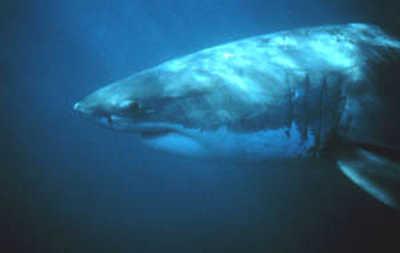- Lake County News reports
- Posted On
Federal government won’t give California great white sharks endangered species status

On Friday, the National Marine Fisheries Service declined to protect great white sharks off the coast of California under the Endangered Species Act.
Last August, Oceana, the Center for Biological Diversity, Shark Stewards, and WildEarth Guardians petitioned the federal government for federal endangered species protection for the apex predator’s genetically distinct Northeastern Pacific population, found off California and Guadalupe Island, Mexico.
At the same time, the groups also submitted a petition to the state of California for a parallel listing. In February, California wildlife officials placed great white sharks on the candidate list for state Endangered Species Act protection under California law. A final California Fish and Game Commission decision is expected next winter.
In its decision, the National Marine Fisheries Service discounted the first peer-reviewed scientifically published population estimate of West Coast great white sharks which unveiled what listing proponents said are alarmingly low numbers of breeding females — numbers drastically lower than those of most other endangered species.
Listing proponents said information referenced in the petition continues to be the best available science and meets the legal criteria for listing under the Endangered Species Act: All indications are that these ancient animals are seriously at risk of extinction, according to the petitioning group.
“The federal government simply made the wrong decision in the face of the best available science,” said Geoff Shester, California Program Director for Oceana. “However, our efforts have demonstrated the dire need for more research on West Coast white sharks, and we should all agree that steps need to be taken immediately to start managing the white shark bycatch problem in gillnet fisheries.”
“We’re really disappointed that the sharks won’t be protected under federal law. This means they’ll die painfully in fishing nets instead of getting the safety net of the Endangered Species Act,” said Catherine Kilduff, Staff Attorney at the Center for Biological Diversity.
The Friday decision followed a National Marine Fisheries Service finding last September that this white shark population meets the criteria to qualify as a distinct population segment under the ESA, which allows the species or sub-species to be considered for listing.
As part of the listing petitions filed last year, the groups submitted new scientific studies from 2011 and 2012 that produced the first population estimates of U.S. West Coast adult and sub-adult great white sharks, together totaling fewer than 350 sharks – far lower numbers than researchers expected.
They argued that the continued existence of white sharks also is hampered by their low reproductive output, slow growth rate, late maturity, and high mortality rates during the first year.
Great white sharks are a critical part of the ocean ecosystem, playing an important top-down role in structuring the ecosystem by keeping prey populations in check, like sea lions and elephant seals. The presence of great white sharks ultimately increases species stability and diversity of the overall ecosystem.
“While we appreciate the evaluation that NMFS has given this species petition, we hope that white sharks will receive additional information from scientists, and increased scrutiny from California fisheries on the nursery to ensure long-term protection for this population is given,” said David McGuire, Director of Shark Stewards.
“The threats to our oceans and the species that call them home are grave and increasing, yet of the 1,475 species protected under the Endangered Species Act, only 94 are marine species,” said Bethany Cotton, Wildlife Program Director at WildEarth Guardians. “NMFS’ refusal to protect the imperiled great white shark is part of a larger pattern of failure to address threats to marine species and ocean health.”

















